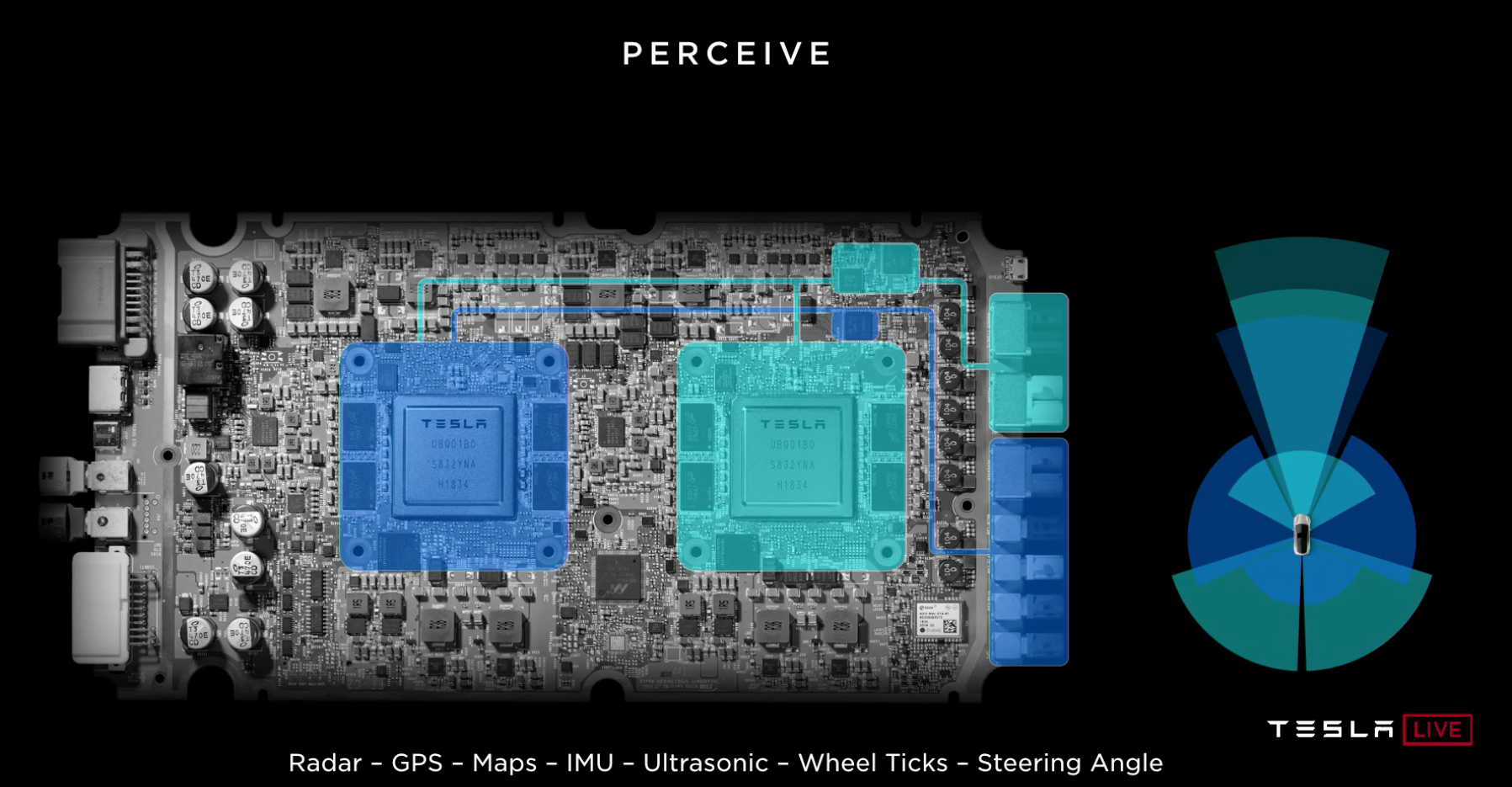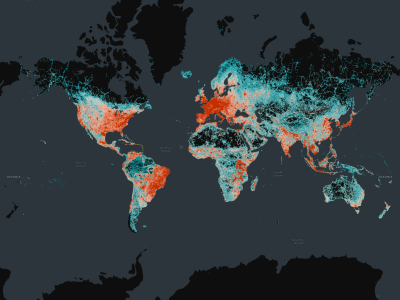The autonomous driving world is still buzzing about Tesla’s “Autonomy Day” last month, where CEO Elon Musk and a host of others tried to convince everyone that Tesla’s self-driving cars will be “feature complete” before the end of 2019 and that its fleet of robot taxis will be ready for regulator approval and full roll out in certain markets “sometime next year” — all with the use of radar and imaging, not lidar.
Elon: “There’s 3 steps to self-driving: there’s feature complete, then there’s feature complete to the degree that … where we think that the person in the car does not need to pay attention, then there’s at a reliability level where we also convince regulators that that is true.
“We expect to be feature complete in self driving this year, and we expect to be confident enough from our standpoint to say that we think people do not need to touch the wheel and can look out the window sometime probably around … in the second quarter of next year. And we expect to get regulatory approval, at least in some jurisdictions, for that towards the end of next year. That’s roughly the timeline that I expect things to go on. …
Of course, Musk’s disdain for lidar is nothing new. We told you three years ago that Musk was doing his 3D sensing with cameras and radar (even making point clouds with radar), but now he’s doubling down and beginning to win over converts. The question is: Does Musk’s position matter for the lidar market at large?
Well, if the most prominent naysayers are correct and Tesla has bet incorrectly, it could be a major boon to lidar manufacturers and the mainstreaming of the technology in general. Just as Olivia Solon argued in the Guardian in 2016, lidar’s biggest defenders today continue to point to the irresponsible nature of going lidar-less, saying only lidar can deliver the safety necessary to make driverless cars able to navigate roadways without causing dangerous accidents.
Here’s AI writer Lance Eliot in Forbes this week:
When an autonomous car gets into an accident, which mark my words will happen, you can be further assured that lawsuits will be filed. I’ve previously described that one of the key elements of such lawsuits will be what did the autonomous car maker do as part of the design, building, and fielding of their self-driving car, and particularly how did they seek to ensure safety and reliability.
For Tesla, if pressed by a lawsuit, they will need to defend in court their decision to not use LIDAR. As you can imagine, Tesla will be on rather shaky ground if it is shown that essentially all other autonomous cars are using LIDAR. The burden to explain and justify the lack of LIDAR on Tesla’s is going to be mighty steep.
…
The Tesla position would presumably be that the addition of LIDAR would not have materially avoided the car accident and loss of lives, but this is going to be tough to showcase since in theory any use of LIDAR is going to incrementally improve the safety odds, assuming it is used wisely, and so it’s another part of the uphill climb by Tesla to avoid getting summarily dinged for their lack of LIDAR.
So, Tesla gets smoked in a lawsuit due to lack of lidar and all of a sudden the company has to retrofit its plans with lidar data? Boom. That’s a lot of new lidar units needed.
But this begs the question, doesn’t it? Both the Guardian and Eliot posit that “in theory any use of lidar is going to incrementally improve the safety odds.” But is that actually true? We don’t know! Isn’t it possible the use of cameras and radar is just as effective? People have been arguing for photogrammetry as a cost-efficient alternative to lidar since I’ve been in this market. Isn’t it possible Tesla has figured out how to do the AI faster and better with images and radar?
The claim to have figured it out, anyway, with pointed commentary:
“Lidar is a fool’s errand,” Elon Musk said. “Anyone relying on lidar is doomed. Doomed! [They are] expensive sensors that are unnecessary. It’s like having a whole bunch of expensive appendices. Like, one appendix is bad, well now you have a whole bunch of them, it’s ridiculous, you’ll see.”
Oh, and Andrej Karparthy, Teslas senior director of AI, piled on:
“In that sense, lidar is really a shortcut,” Karparthy said. “It sidesteps the fundamental problems, the important problem of visual recognition, that is necessary for autonomy. It gives a false sense of progress, and is ultimately a crutch. It does give, like, really fast demos!”
What’s unclear is why not just use lidar in combination with the imaging instead of radar. Tesla seems to be clinging to the idea that lidar is expensive, but at $250 a unit and a host of companies trying to push that lower, it’s hardly a show-stopper for a $37,000 car. It doesn’t seem possible that Tesla has just completely missed the massive decrease in price per unit, right?
Well, Musk has an answer for that. Sort of:
“If you’re gonna use active photon generation, don’t use visible wavelength, because with passive optical, you’ve taken care of all visible wavelength stuff. You wanna use a wavelength that’s occlusion-penetrating, like radar. LIDAR is just active photon generation in the visible spectrum.”
That seems to be an apples-and-oranges kind of thing, but maybe you can parse it. Velodyne certainly isn’t impressed with Tesla’s claims. And they think Musk is muddying the overall waters, confusing people with what autonomy really is.
“Velodyne takes the position that ‘autonomy,’ implies that a car can drive safely and do all functions while a driver takes a nap,” [Velodyne President Marta Hall] said. “Tesla offers what are really ‘driver features,’ not autonomy. They are cool features that are fun, but not for napping.”
Further, you might be saying, who cares? There are any number of other automotive companies still all-in on lidar and one company going rogue isn’t exactly going to devastate the marketplace. Unless they win. Which at least one commentator is predicting (on Joe Rogan’s podcast, so take that with a grain of salt):
“If you’re going to build artificial intelligence systems…camera is the way to go, because you can learn so much more, you can see so much more,” Fridman said. “The richer, deeper sensor is the camera, but it’s much harder. You have to collect a huge amount of data. It’s a little bit more futuristic, so it’s a longer-term solution.”
As with the efficacy and applicability of lidar, Musk’s dependence on imagery is largely fueled by increased processing power. As part of their demonstration last month, Tesla touted a processor capable of churning through 2,300 frames per second:

That’s a lot of frames.
How fast is that? “Nvidia Xavier (available early 2018) had 30 TOPS (Tera Operations Per Second). Tesla’s FSD chip has 144 TOPS.” So, pretty dang fast. But, you know what? Processors aren’t getting slower. So, the imaging solution is only going to get better and better. If Tesla is confident now, how confident will they be next year when their processor is twice as fast?
Given that lidar has made advances in performance and cost-effectiveness due to the push to get units on cars powering autonomous vehicles, it’s at least somewhat possible that a huge shift in the driverless market away from lidar and toward imaging could have an effect on the amount of money and time being poured into improving lidar systems. That, in turn, could slow down the price plunge for all types of laser scanning devices, including commercial applications.
Further, autonomous cars are for at least some manufacturers, the golden goose. This Ars Technica piece outlining 10 lidar start-ups and their relative strengths and weaknesses starts out with the supposition that, “Lidar is essential for self-driving cars.” If lidar turns out to NOT be essential for self-driving cars, I’m imagining a lot of investors with very sad faces, indeed. And once the VC community has dismissed a technology, it’s hard to convince them to come on back.
Quite simply, everyone agrees that Tesla is the furthest along in their self-driving development. They have the best AI, given the most amount of input to train it, and they have more cars on the road constantly making it better than any other manufacturer. If Musk is proven right and Tesla wins, that could deal a serious blow to the lidar industry.
But at least one commentator on the marketplace says, “not to worry.” Musk and his ilk are just blowing smoke anyway, and no one is going to solve autonomous driving anytime soon, anyway:
This is not to say that driverless cars can’t happen forever. I would never say never. It’s just that the problem is not close to being resolved right now, and many of the proposed remedies are unlikely to make it happen. We may be at the 95% point of accuracy now. Or 80% or 99.9%. What it will take is something like 99.99999999999% for the issue to become socially acceptable — and perhaps not even then. Success is at least 7 or 8 decimal points away. It will take more than a decade. When people ask, I say it’s closer to 100 years away than 10.
As I’ve said many times before, I hope that guy is wrong. I think driverless cars will be a boon for everyone from the disabled to those who like to have some cocktails while watching live music out on the town. I’m rooting for someone to figure it out, with lidar or without.





